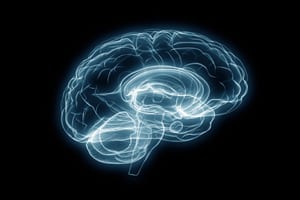 Researchers say they have preliminary evidence that drug therapy may be able to delay the onset of Alzheimer’s disease.
Researchers say they have preliminary evidence that drug therapy may be able to delay the onset of Alzheimer’s disease.
The team from the UK, Sweden and the Netherlands have shown in preclinical studies that a drug called bexarotene seems to work as a ‘neurostatin’, preventing the degeneration of nerve cells in a model of Alzheimer’s disease (AD) by preventing the production of neurotoxic beta-amyloid aggregates.
They suggest that – in much the same way as statins are used to prevent cardiovascular disease in people with elevated cholesterol – bexarotene or related compounds could be given to people at risk of developing AD-type dementia.
Bexarotene, which is sold by Eisai in Europe and Valeant Pharma in the US as Targretin, is an approved treatment for lymphoma and according to the research team is the first neurostatin-like drug to be reported. It was identified out of 10,000 screening candidates using a new assay developed at Cambridge University.
When the drug was given to nematode worms genetically programmed to develop a neurodegenerative syndrome, it had no effect once symptoms had already appeared. However, when given early on it completely prevented symptoms from appearing.
The research is published in the journal Science Advances and was carried out by scientists at the universities of Cambridge, Lund and Groningen.
They found that bexarotene seemed to interfere with the first step in the molecular cascade that leads to the destruction of neurons in AD – called primary nucleation – which leads to the creation of amyloid fibrils. These fibrils eventually clump together to form toxic oligomers that damage neurons.
“The body has a variety of natural defences to protect itself against neurodegeneration, but as we age, these defences become progressively impaired and can get overwhelmed”, said senior author Michele Vendruscolo of Cambridge University.
“By understanding how these natural defences work, we might be able to support them by designing drugs that behave in similar ways.”
The team hypothesises that efforts to prevent the clumping of amyloid into oligomers in the last two decades have been unsuccessful because they were not based on a thorough understanding of the molecular triggers for the process.
Suppressing primary nucleation “is the aim for any neurostatin-type molecule”, according to Vendruscolo. “If you stop the process before aggregation has started, you can’t get proliferation.”
Bexarotene has previously been tested as an AD therapy, but these studies focused on its use to dissolve established amyloid plaques and were unsuccessful. Now, the team want to carry out trials to see if the drug can prevent AD in high-risk patients.
“This new work in worms suggests the drug may need to be given very early in the disease”, commented Rosa Sancho, head of research at Alzheimer’s Research UK.
“We will now need to see whether this new preventative approach could halt the earliest biological events in [AD] and keep damage at bay in further animal and human studies.”
A note of caution has been sounded by Doug Brown, R&D director at the Alzheimer’s Society, who noted that Bexarotene has many side effects which need to be taken into account if the drug is to be given to at-risk people who are otherwise healthy.
Nevertheless, it has been more than 10 years since a new drug for dementia has been found and “repurposing drugs that already work for other conditions could provide us with a shortcut to new … treatments”, he added.




